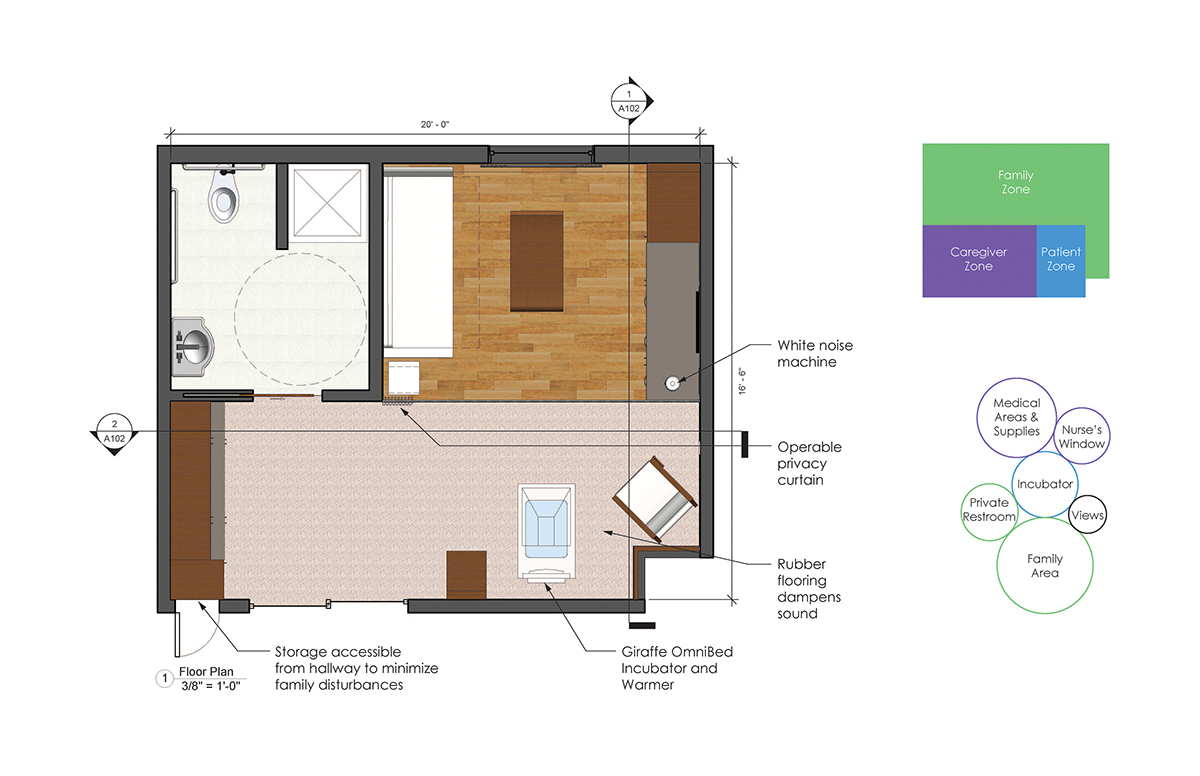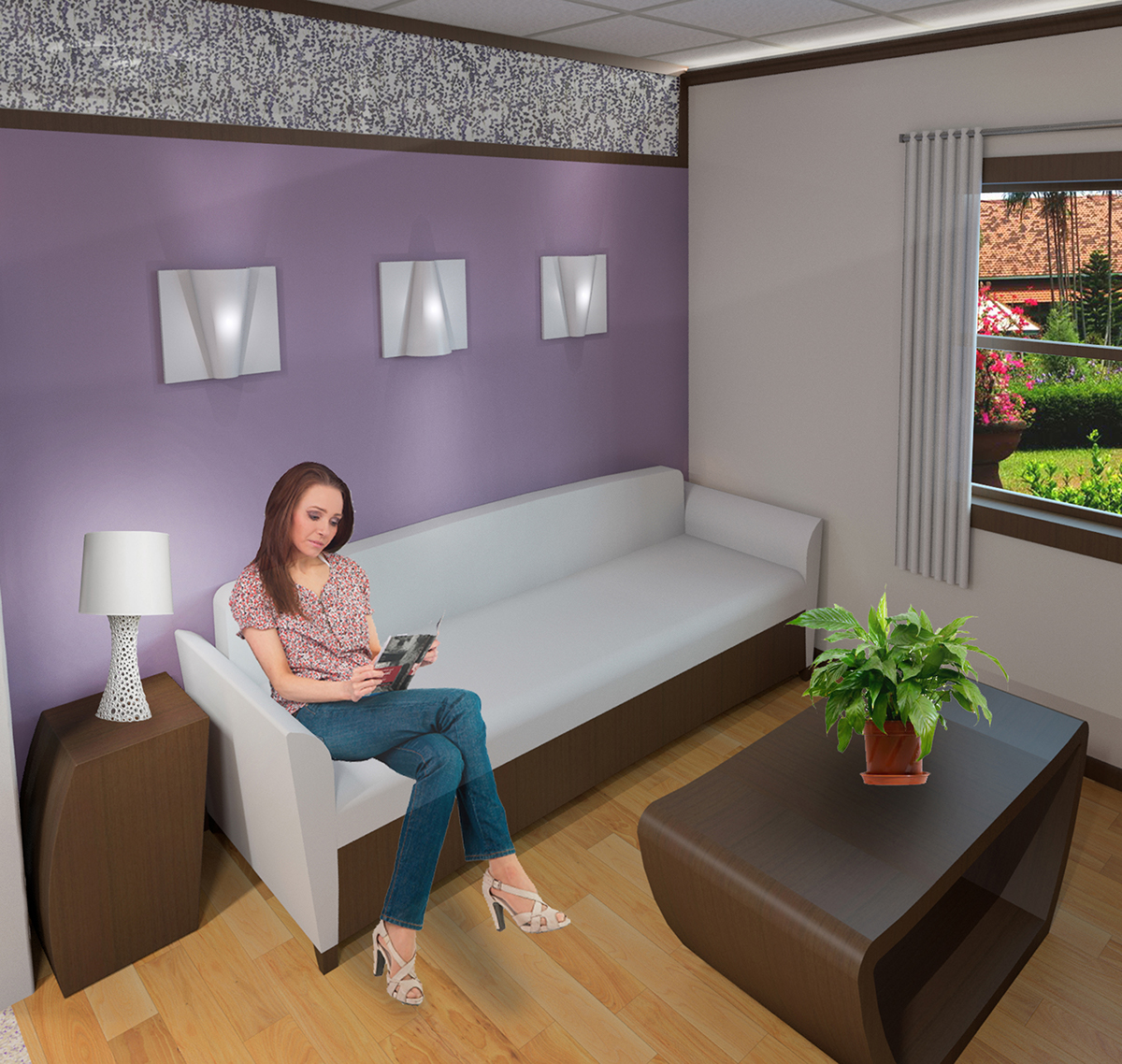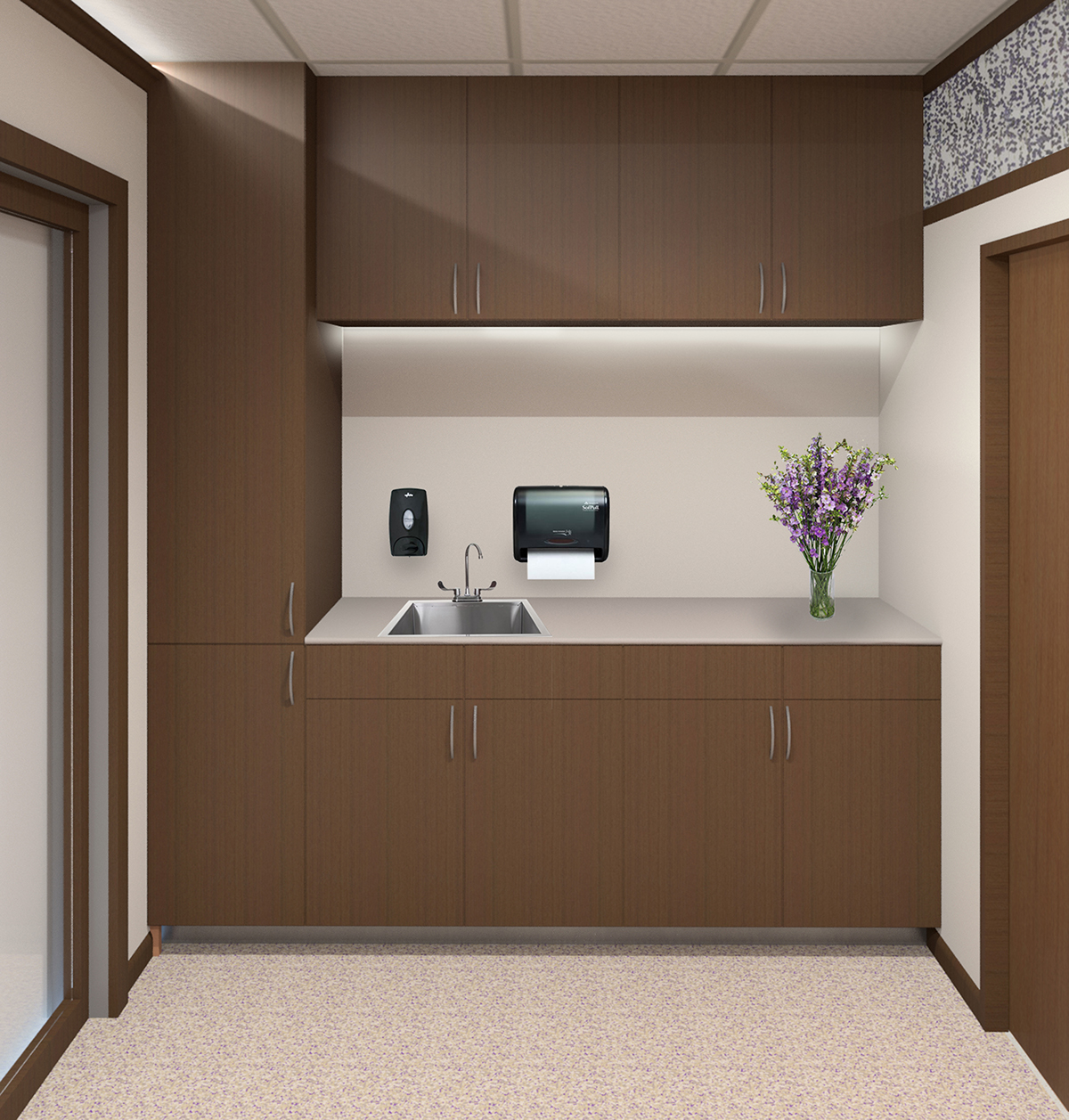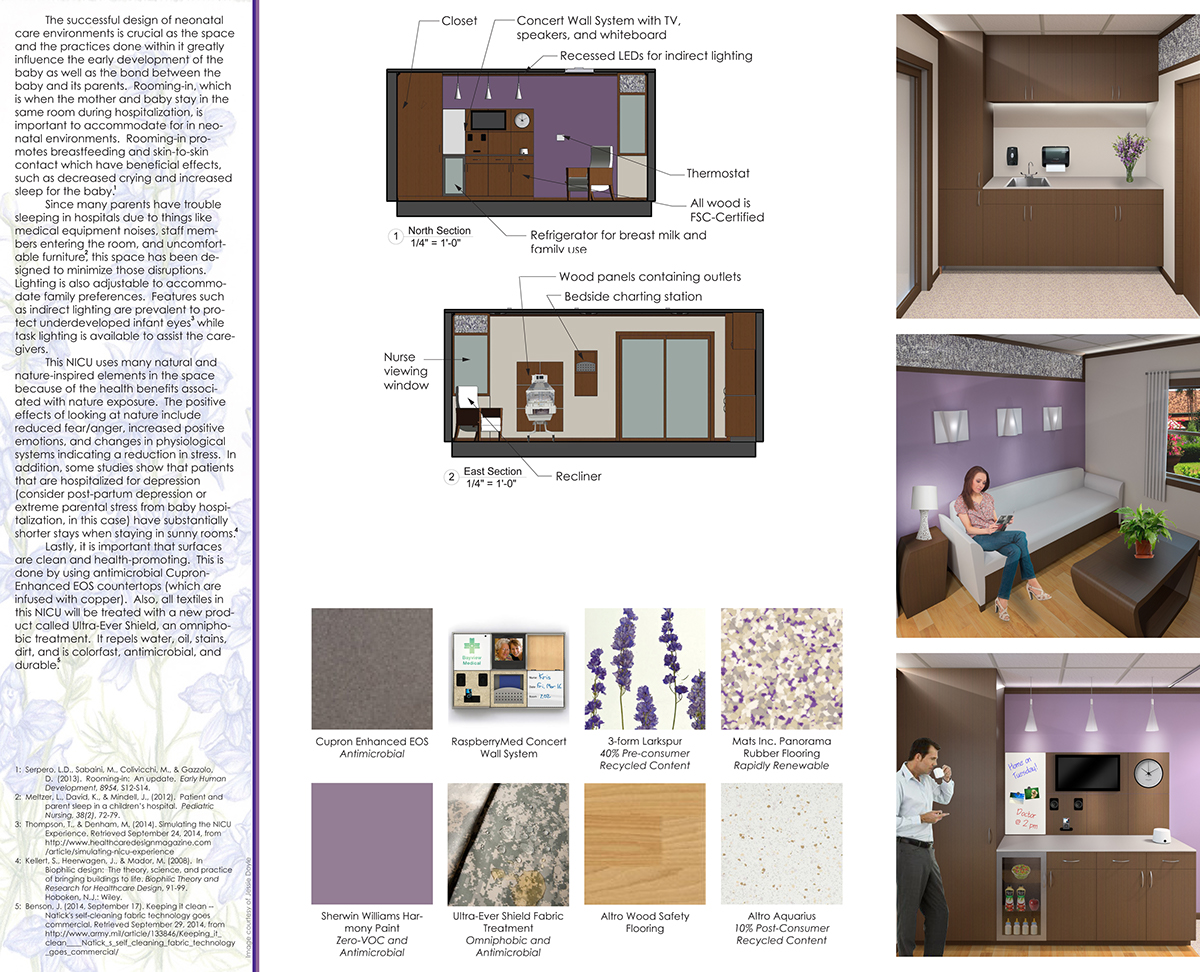






The concept for this private NICU is the incorporation of nature and sustainable practices to create a relaxed, healthy environment. This was accomplished by using materials that had any of the folloring features: low/zero VOC content, rapidly renewable, recycled content, antimicrobial, FSC Certified, GreenGuard Certified, etc. There are features such as plants and flowers in the space, nature views, flowers embedded in 3-form resin, wood-like flooring, and a spring-inspired color scheme, all of which created a nature-like environment. It was crucial to design a space that was as inviting to the family as it was functional for the hospital staff.
Goal #1: Maximize the comfort for the family and patient through lighting/HVAC controls, creative privacy features, exposure to nature, and a well-planned family area.
Goal #2: Incorporate as many sustainable and health-promoting materials as possible to reduce negative health impacts associated with things like bacteria and VOC-emitting products.
Goal #3: Provide convenience for the caregiver through effective space planning, minimizing travel in the patient’s room, and ease of access to the patient.
The lighting concept for this space was all about flexibility. There are various forms of lighting including recessed strip lighting in the ceiling corners, table lamps, pendants above counters, wall sconces by the couch, task lighting for procedures, and an indirect, diffused, recessed ceiling luminaire called Menlo by Thorn Lighting. The various forms of indirect lighting (strip, sconce, and Menlo) protect underdeveloped infant eyes while the task lighting allows the caregiver to easily provide care. The availability of lighting is sure to provide any desired level of lighting in the space. All lighting is LED.
The successful design of neonatal care environments is crucial as the space and the practices done within it greatly influence the early development of the baby as well as the bond between the baby and its parents. Rooming-in, which is when the mother and baby stay in the same room during hospitalization, is important to accommodate for in neonatal environments. Rooming-in promotes breastfeeding and skin-to-skin contact which have beneficial effects, such as decreased crying and increased sleep for the baby.
Since many parents have trouble sleeping in hospitals due to things like medical equipment noises, staff members entering the room, and uncomfortable furniture, this space has been designed to minimize those disruptions. Lighting is also adjustable to accommodate family preferences. Features such as indirect lighting are prevalent to protect underdeveloped infant eyes while task lighting is available to assist the caregivers.
This NICU uses many natural and nature-inspired elements in the space because of the health benefits associated with nature exposure. The positive effects of looking at nature include reduced fear/anger, increased positive emotions, and changes in physiological systems indicating a reduction in stress. In addition, some studies show that patients that are hospitalized for depression (consider post-partum depression or extreme parental stress from baby hospitalization, in this case) have substantially shorter stays when staying in sunny rooms.
Lastly, it is important that surfaces are clean and health-promoting. This is done by using antimicrobial Cupron-Enhanced EOS countertops (which are infused with copper). Also, all textiles in this NICU will be treated with a new product called Ultra-Ever Shield, an omniphobic treatment. It repels water, oil, stains, dirt, and is colorfast, antimicrobial, and durable.
Serpero, L.D., Sabaini, M., Colivicchi, M., & Gazzolo, D. (2013). Rooming-in: An update. Early Human
Development, 8954, S12-S14.
Meltzer, L., David, K., & Mindell, J., (2012). Patient and parent sleep in a children’s hospital. Pediatric Nursing, 38(2), 72-79.
Thompson, T., & Denham, M. (2014). Simulating the NICU Experience. Retrieved September 24, 2014, from http://www.healthcaredesignmagazine.com /article/simulating-nicu-experience
Kellert, S., Heerwagen, J., & Mador, M. (2008). In Biophilic design: The theory, science, and practice of bringing buildings to life. Biophilic Theory and Research for Healthcare Design, 91-99. Hoboken, N.J.: Wiley.
Benson, J. (2014, September 17). Keeping it clean -- Natick's self-cleaning fabric technology goes commercial. Retrieved September 29, 2014, from http://www.army.mil/article/133846/Keeping_it_ clean____Natick_s_self_cleaning_fabric_technology _goes_commercial/






